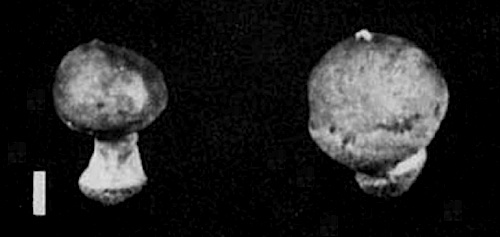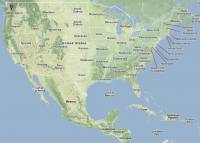
|
|
|
|
Family: Agaricaceae
|
Wright J.E. 1987. Bibliotheca Mycologia 113: 198. Tulostoma stuntzii Oliver & Hosford. - Mycotaxon 9 (1): 278-279, fig. 1. 1979. Etym.: Dedicated to the North American mycologist Dr. Daniel E. Stuntz. From the original diagnosis: Spore-sac up to 14 mm diam, globose-depressed. Exoperidium greyish, hyphal, caducous except at the base. Endoperidium light brown, becoming dirty white with age, membranous, smooth to slightly areolate; composed of two layers loosely defined: an outer one formed by more or less gelified hyphae intermixed with thick -walled hyphae, gradating into an inner one composed of tightly intermixed, thick-walled hyphae, similar to those of the capillitium. Mouth prominent, tubular, up to 1.5 mm high, the aperture varying from 1-3 to 2-3 mm diam, concolorous with the endoperidium. Socket scarcely distinct, mostly covered with the remains of the exoperidfum, when visible, smooth. Gleba not described. Stem short, obese, up to 9 x 8 mm, slightly attenuated towards the apex, white, striate to deeply sulcate, the base wide, enclosed in a sandy cup. Spores 4.5-6-(7) µm diam, averaging 5.7 µm, globose to subglobose, finely echinulate under L.M., with spines extending within a hyaline thin layer surrounding the spore; some apiculate, yellowish brown in 3% KOH sol, acyanophilous and inamyloid, excepting some occasional spore that darkens. Capillitium rare; when present, hyaline, threads 4-7 µm diam, smooth, without crystalline incrustations, thick-walled, not swollen at the rare septa, up to 10 µm diam. Habitat: solitary in sandy soil of semistabilized dunicolous zones, growing among Chrysothamnus sp, in autumn. Holotype: United States, Washington, Kittitas Co., nr Vantage, leg. Hosford 1594 (WSU?). Illustration: Oliver & Hosford (op. cit.). |









